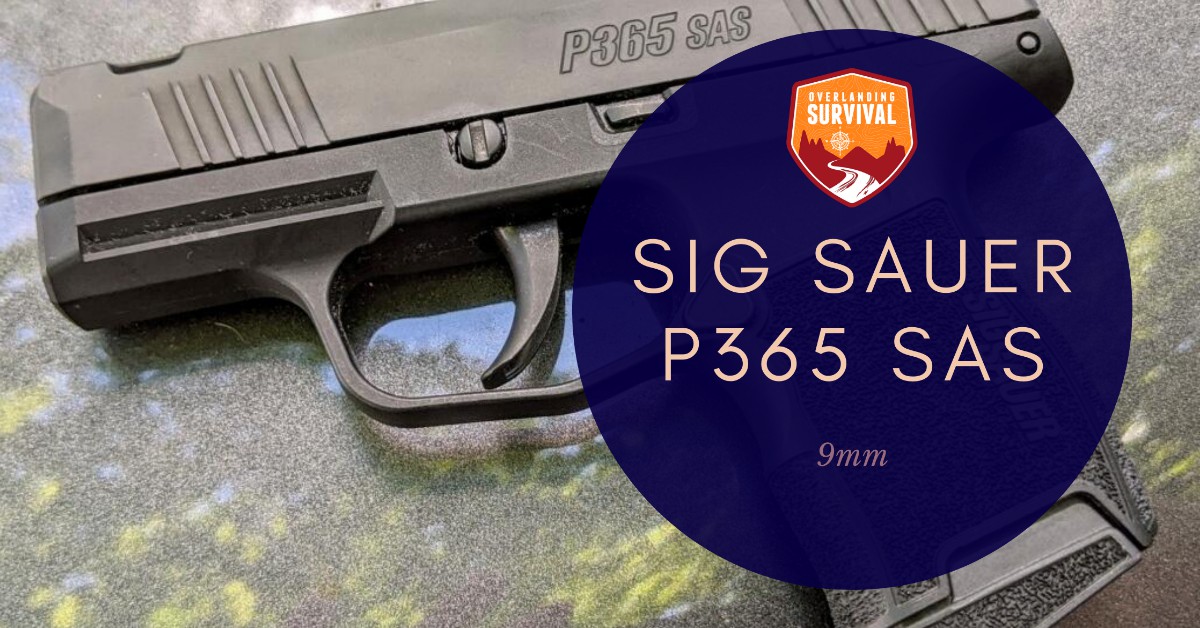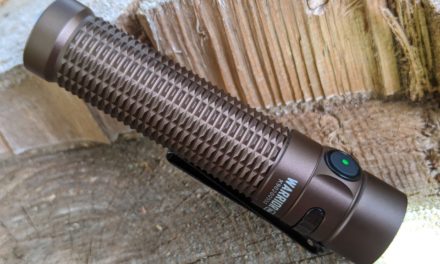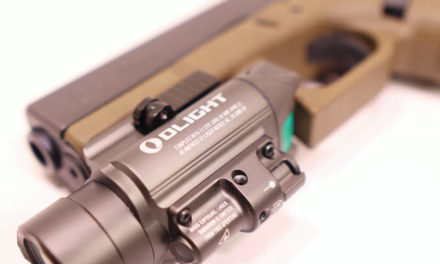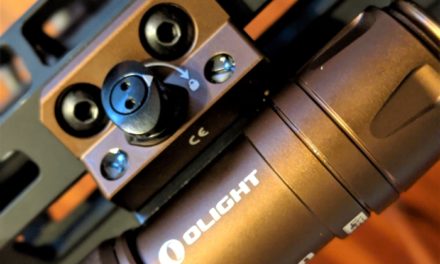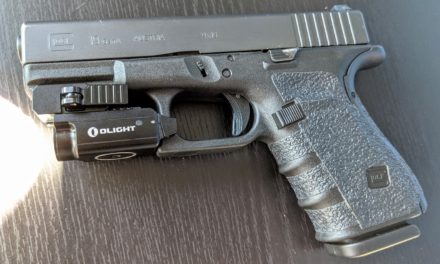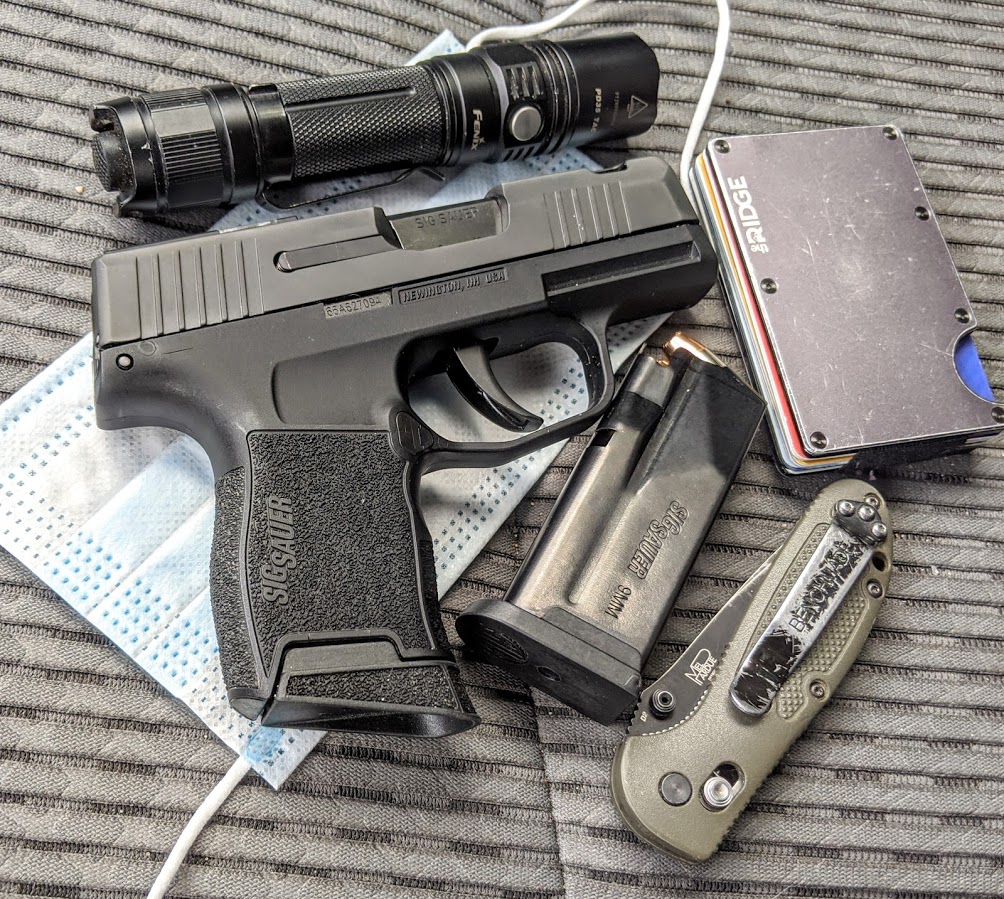
By now, the SIG Sauer P365 should not be an unknown commodity to anyone in the firearms community. In early 2018, amidst a huge industry media buzz, SIG Sauer announced the micro-compact 9mm semi-auto pistol that turned the concealed carry world on its ear: a gun smaller than the vaunted Glock 43 in almost all dimensions – even width – yet still packing 10+1 rounds in a miniscule steel-bodied magazine. However, there were no compromises – the new P365 (so named because you can carry it concealed 365 days of the year) boasts excellent steel sights, a great trigger pull straight from SIG’s own P320 playbook, full controls with optional thumb safety, forward slide serrations, along with the “To Hell and Back” reliability and accuracy of the SIG Sauer offerings. That ball that could have been easily fumbled in an increasingly crowded and competitive market? Yeah, SIG booted it out of the park. The SIG Sauer P365 is now the gold standard in small 9mm carry pistols.
So I got one.
I’d been needing a really small pistol for concealed carry for some time. My normal EDC, a Glock 19 Gen4, is extremely capable but a tad difficult to hide when it’s 92 degrees out with 86% humidity and you’re in a pair of cargo shorts and the lightest T-shirt you own. I knew a smaller, pocket-sized gun was in order, and my eye was continuously roving to the SIG Sauer P365.

In the past, .38 caliber J-frame S&W revolvers, a Kahr MK40, and a S&W M&P40C had filled the small gun role for me reasonably well. But, wanting something more, I’d been trying lots of guns to find the right one. Honorable mentions go to the S&W M&P Shield, the Glock 43, and the Honor Defense Honor Guard pistols – they’re all wonderful guns in their own right – but the second I handled a SIG Sauer P365, I knew it was the one for me. However, I have a long-standing philosophy about mechanical objects: never buy the first ones off the assembly line – let some other schmoe be the guinea pig that sorts out beginning-of-production-run foibles. I waited a year or so to let the bugs get sorted, then the hunt began in earnest. And when a P365 SAS almost literally fell into my lap, I couldn’t say no – I grabbed the pistol.
ENTER THE SIG SAUER P365…SAS
The diminutive 9mm-chambered SIG Sauer P365 SAS is, according to SIG’s website, “America’s #1 Selling Handgun” – and here’s why. With dimensions of 5.8 inches long, 4.1 inches tall, and just one inch wide, the 17.8 ounce, striker-fired P365 is a tiny wonder of engineering. To put this in perspective, the 10+1 capacity P365 is slightly smaller in overall dimensions than the vaunted 9mm Glock 43, which only provides six rounds in the magazine. Unlike the Glock, steel sights come standard on the P365, the trigger pull for the P365 is far better in stock form, and the grip texture is, well, grippier than the Glock’s tiny molded-in mountain range of weird little pyramids. Both guns have factory extended magazines to increase capacity on the SIG to 12 rounds, with the Glock increasing to a heady 7 rounds. Both guns have polymer frames and steel slides, but the SIG has an easily-removable stainless steel chassis insert to house the trigger group and slide rails, whereas the Glock has its parts all living in the polymer grip, held in place with pins. The P365 also offers a proprietary rail system to allow installation of light and laser systems, if that’s your bailiwick. the P365 comes with SIG Sauer’s proprietary black Nitron finish, and the grip frames are exchangeable so you can modify, stipple, spray paint, tape, fold, spindle, and mutilate to your heart’s content – a new grip module is just a couple clocks away.
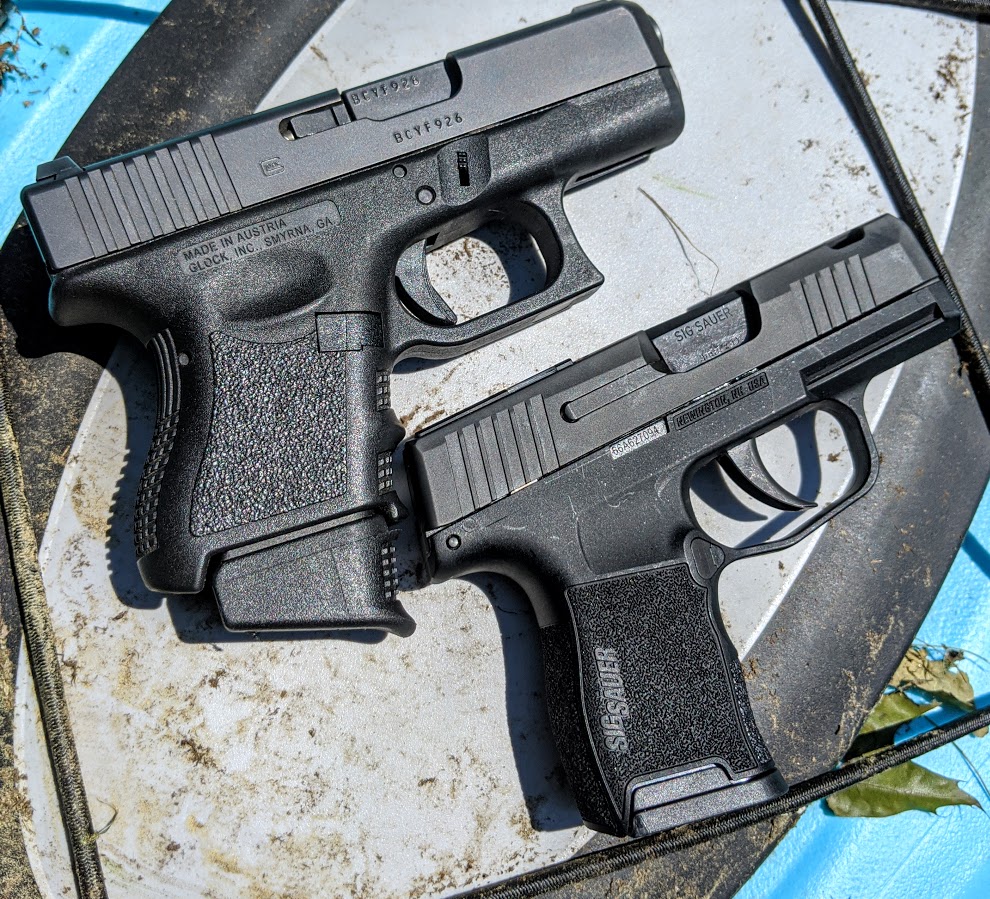
Stepping up the game, late last year SIG Sauer introduced the new SAS variant. SAS doesn’t mean “Special Air Services”, the acronym you might be familiar with – but instead stands for “SIG Anti-Snag System”. This combination of letters after the model designation means the pistol has been treated to SIG Sauer’s special “melting” and de-horning treatment that eradicates sharp edges and corners, and provides a superior deep concealment platform with nothing to snatch on clothing during a draw. SIG Sauer also provided a novel solution to take this process one step further – the elimination of sights.
NO P365 SIGHTS?
Okay, I’ll be more specific. With the SAS package, SIG Sauer decided to eradicate the usual sights and their corresponding dovetails right out of the slide design altogether, instead choosing to incorporate a novel sighting solution – The Meprolight FT Bullseye sight. And the FT Bullseye sight is mounted IN the slide, not on it. You heard me right. IN the slide.
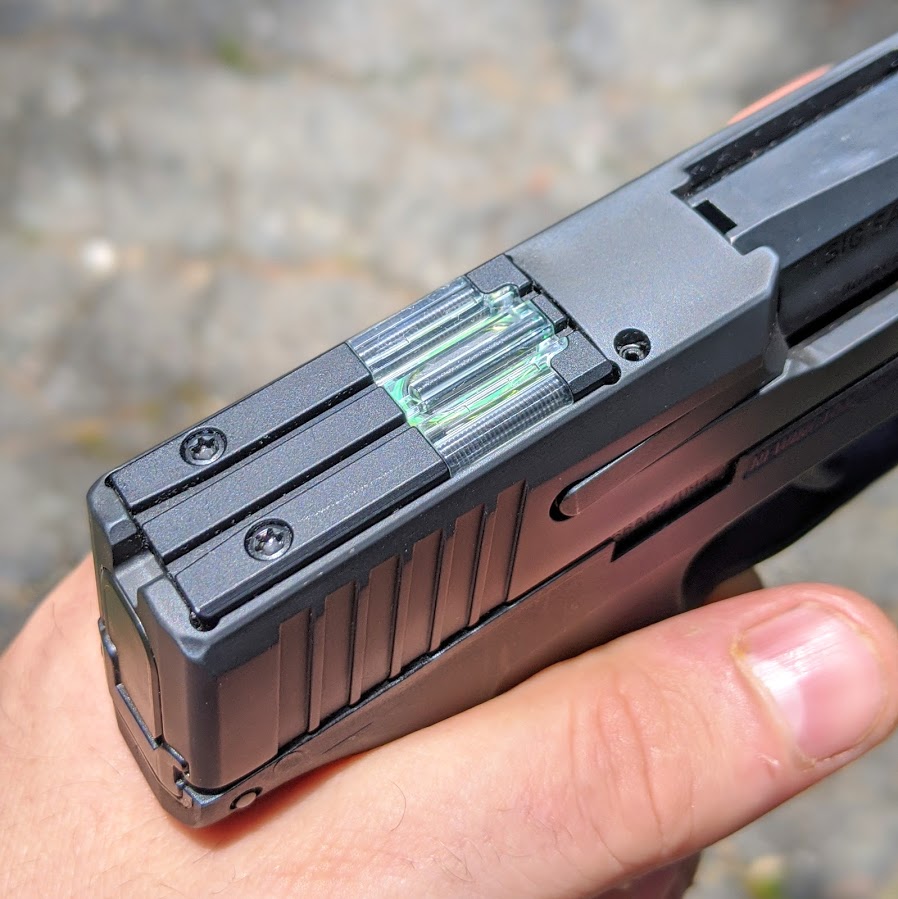
The FT Bullseye sight is a nifty combination of tritium sights melded with fiber optic technology. That’s all well and good, but where the FT Bullseye sight really shines (pardon the pun) and makes the SIG Sauer P365 SAS unique is the fact that when you present the pistol on target, you’re actually looking through the gun, using the bright green dot-in-a-circle aperture to line up on your target. The FT Bullseye sight is mounted flush to the top of the gun in a slide cutout similar to an RMR – type mounting surface. With this sight installation, there is zero need for traditional protruding sights mounted on the top of the slide; the P365 SAS has its sighting system buried in the top of the slide. And once you get used to it, the sighting system works – and it works well for the gun’s intended purpose.
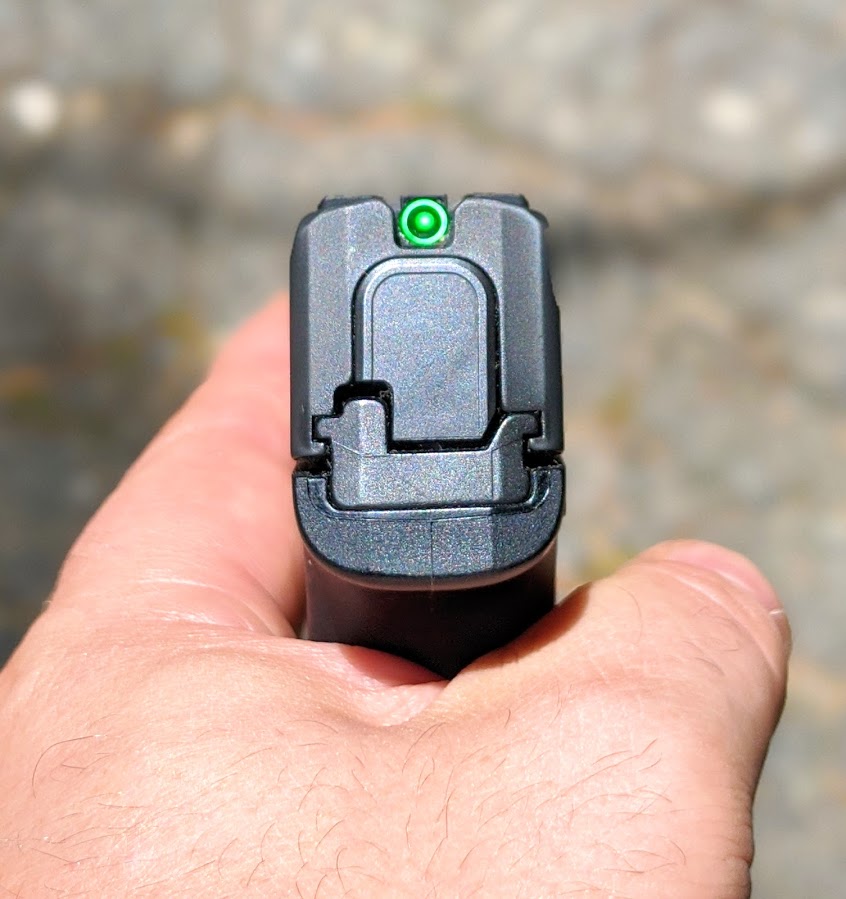
The P365 SAS model also receives a few other novel changes that contribute to the gun’s stellar carry attributes: SIG Sauer’s easily recognizable takedown lever has been replaced with a slotted screw-type head, and the slide stop lever has been reduced to a small steel nub; it resides in its slot, just about flush with the side of the grip frame. These modifications retain the individual part’s functionality while minimizing snag potential and reducing overall thickness of the firearm. Also, the P365 SAS sports a ported barrel – two small round ports at the 11 o’clock and 1 o’clock positions vent gas upwards trhough two slots in the frame in an attempt to control recoil and eliminate recoil snappiness with hot defensive ammo. The SAS package is a super-slick (literally and figuratively) combination of ideas and parts that form SIG Sauer’s idea of the perfect deep carry package.
THE SIG SAUER P365 SAS IN ACTION
The day after the little SIG came home with me, I had to get it to the range to test these novel sights…and oh yeah, make sure it was reliable enough for defensive carry. Yes, I will fully admit I had complete and utter blind faith in a pistol with the SIG Sauer name emblazoned of the slide – I have had many SIG Sauer pistols and each has been brutally accurate and reliable to a fault; I had zero reason to believe the P365 SAS would be any different. However, I still run any new gun through the wringer to make sure it works 100% of the time.
A quick jaunt to the local sandpit with the P365 SAS was in order. I brought along an ammo can full of mixed 9mm ammunition – some mid-range handloads with 115 grain plated bullets, some Winchester 124-grain FMJ target ammo, and a couple boxes of my preferred 9mm defensive carry ammuntion – SIG Sauer’s Elite V-Crown 124-grain hollowpoint.
I simple bullseye target stapled on a piece of plywood was my aiming point; I placed it against a berm and distanced myself 10 paces – 30 feet or so. I’d loaded up the two diminutive 10-round magazines with the factory Winchester FMJ fodder already, so I inserted a mag, sling-shotted the slide (a necessary action due to the slide stop’s flush-mounted design), and lined up the green sights – glowing incredibly brightly in the afternoon sun thanks to the fiber optics.
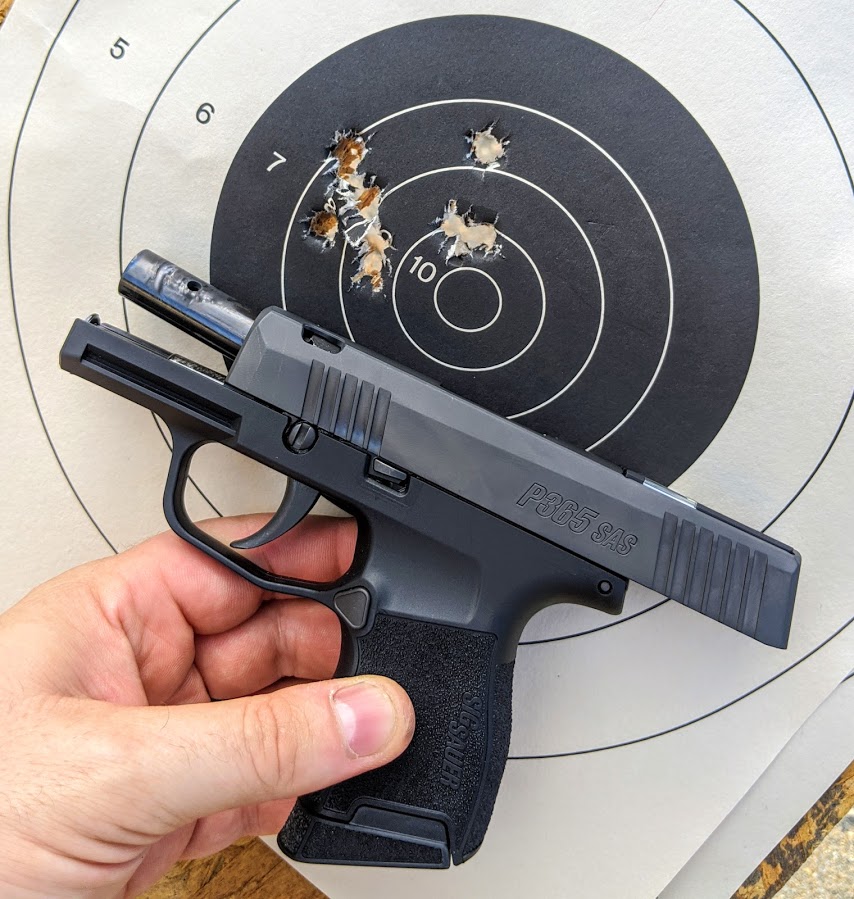
Immediately, I was thrown into a head-scratching moment: How do I use these sights? A normal set of fore-and-aft sights has the shooter focusing on the front sight and leaving the target and rear sight blurry; where the Bullseye FT had no actual front and rear sights and with the gun obscuring much of the target, I wasn’t immediately sure how to handle the sighting arrangement. If I focused on the sights, the target essentially disappeared behind the gun. If I focused on the target, the sights blurred to the point where I couldn’t tell if the dot was centered in the ring. I had to start somewhere, so I did my best trying to keep both points in relative focus, and squeezed the trigger.
The little SIG jumped in my hand at the shot, but I was actually quite impressed with the controllability of the piece. I peeked at the target – a bit low and left. Okay. I lined up again and slowly emptied the magazine into the target, more trying to get a feel for the gun and the sights. The resulting group wasn’t the best I’ve ever fired – probably about 5″ across – but it was to the left of center for sure.
The subsequent 5 magazines of handloaded ammo found the gun repeating the same story, with the groups tightening up a bit as I familiarized myself with the P365. I did eventually settle on the sighting process of keeping the sights in sharp focus, then keeping the target blurred but protruding above the top of the pistol for sighting reference. Using this method combined with slow, deliberate trigger control produced the best group of the day – a group clustered into about 2 1/2″, which I was pleased with. The pistol liked the Winchester white-box FMJ cheapo ammo the best, surprisingly – but the SIG Sauer Elite V-Crown fed like greased lightning and shot almost as well. The 200-round sandpit trial session went without a hitch – the gun gobbled everything up like a teenager and pizza, and the accuracy was certainly very good considering the sights weren’t exactly set up for target shooting. This is a deep-concealment close-in combat pistol, not a bullseye match pistol. The pistol does shoot slightly to the left of point of aim which is a bit consternating, but the accuracy and point of impact is certainly in the range of close-in “combat accurate” if you do your part behind the trigger.
At a shooting meet a few days later, the SIG Sauer P365 SAS was met with a flurry of interest from friends whom I would consider to be “serious gun people”. The best reaction received was a quote from a gent who is an ardent Glock 43 TALOS enthusiast. After sending two mag’s worth of 9mms downrange and hitting every steel target he aimed at, this gentleman looked down at the pistol, kinda half-sighed, and reported, “I’m not very bright, but I know progress when I see it. And this is carry pistol progress.” He then indicated to me that he was going to look at trading his vaunted Glock 43 for a P365 SAS. The older gents who tried the pistol positively adored the bright sights and single focus point, saying that the sighting system was much easier for older eyes to use than a standard rear sight-front sight-target sighting arrangement. Once again, the gun ran without a hiccup for another 260 rounds of mixed ammo types.
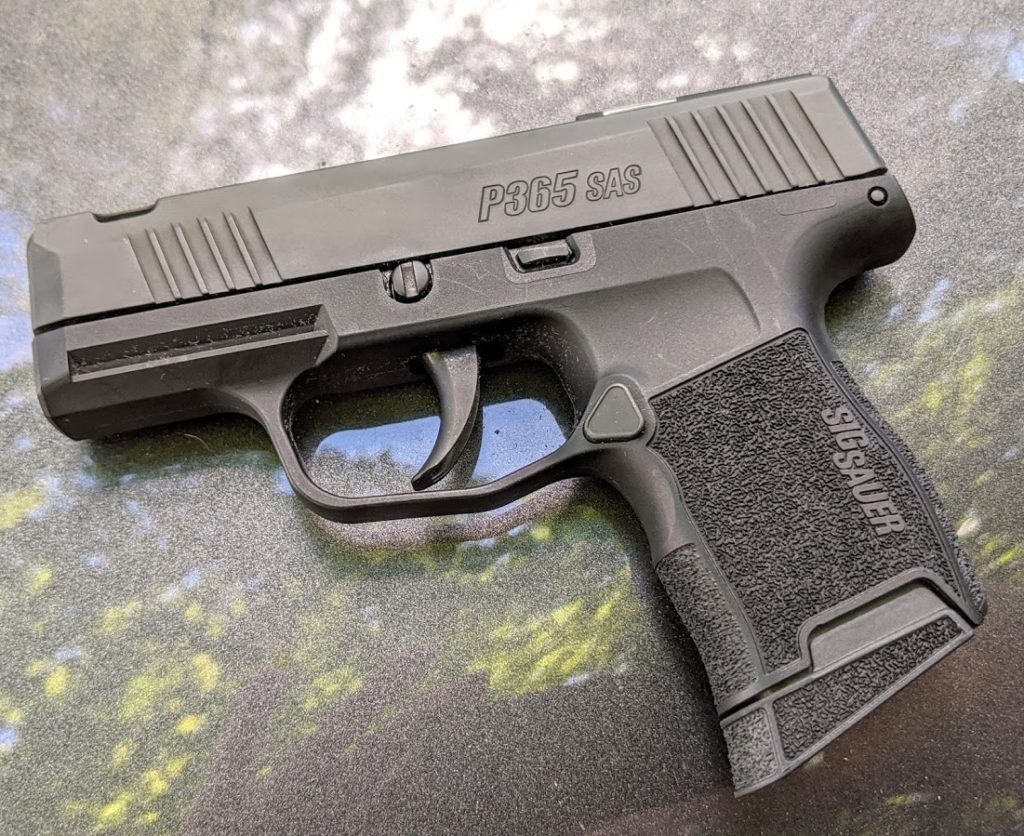
I will report that the flush-mounted slide stop was pretty much useless to drop the slide from lock-back, so if you train using the slide lock to drop the slide, you’ll have to re-think your reload proceedings. However, I do appreciate that my thumb does not accidentally bump the slide lock up and inadvertently lock the slide back while firing – which does happen to me occasionally when shooting Glocks.
Fast hits are very easy with the P365 SAS’s simple, bright sights, and the trigger pull is lovely – it has a bit of takeup creep, but releases crisply and cleanly, with a very audible reset. Shooting 10″ steel gongs at 25 yards is a breeze once you understand the sights and how the gun works. Recoil is extremely controllable and I would like to think that the porting helps, but to be completely honest, I had a standard P365 available to shoot next to my P365 SAS, and the recoil and muzzle flip levels were close to identical. The low bore axis, excellent design, and 9mm chambering help keep the P365 SAS a very easily controlled gun in fast shooting strings. Reloads were a bit slower than with a full-sized gun for sure – the reversible mag catch did feel a bit spongy and took a bit of effort to engage positively, and the little magazines going into a little magwell means practice is definitely in order to get those reload times down.
CARRYING THE SIG SAUER P365 SAS
I’ll be honest with you – I’ve been carrying the P365 SAS daily pretty much everywhere – and I’m absolutely in love with the little gun. I’ve brought the gun to the beach with the pistol riding happily along in the pocket of a pair of swim trucks. A trip to the mall for my wife’s birthday present found the P365 SAS plunked in front front pocket of a set of board shorts. A ride around town to run errands find the SIG in the center console of my 4Runner, ready to be plucked out and dropped in a pocket if I step out of the truck. The 10+1 capacity means I don’t sweat too badly if I don’t bring along an extra magazine, and the pistol positively flies out of the pocket on fast draw requirements with no sharp edges to snag. SIG Sauer has truly mastered the art of pocket carry with the P365 SAS.
However, pocket carry, while easy as heck, is far from optimal for serious duty. Low-threat areas like the beach will find the pistol plopped unceremoniously in a pocket with an empty chamber (lest the trigger catch on some sort of protuberance and fire the gun while in my pocket). However, if the gun is needed due to heading into dubious areas, a round in the chamber and a proper holster are absolutely required. A holster will keep the gun oriented in the same position no matter what your situation, it will keep sand and debris out of the gun, and it will protect the trigger from catching on foreign objects with unwanted results. A small IWB kydex holster will an be absolutely perfect pairing for the small P365 SAS. I’m currently researching holsters to find the best fit for my perceived use of the P365 – but until I get one, I’ll carry the SIG Sauer P365 SAS in condition three – flame away if you wish, but I’d really rather not catch a 124-grain JHP in the femoral artery from my own gun accidentally discharging in my pocket.
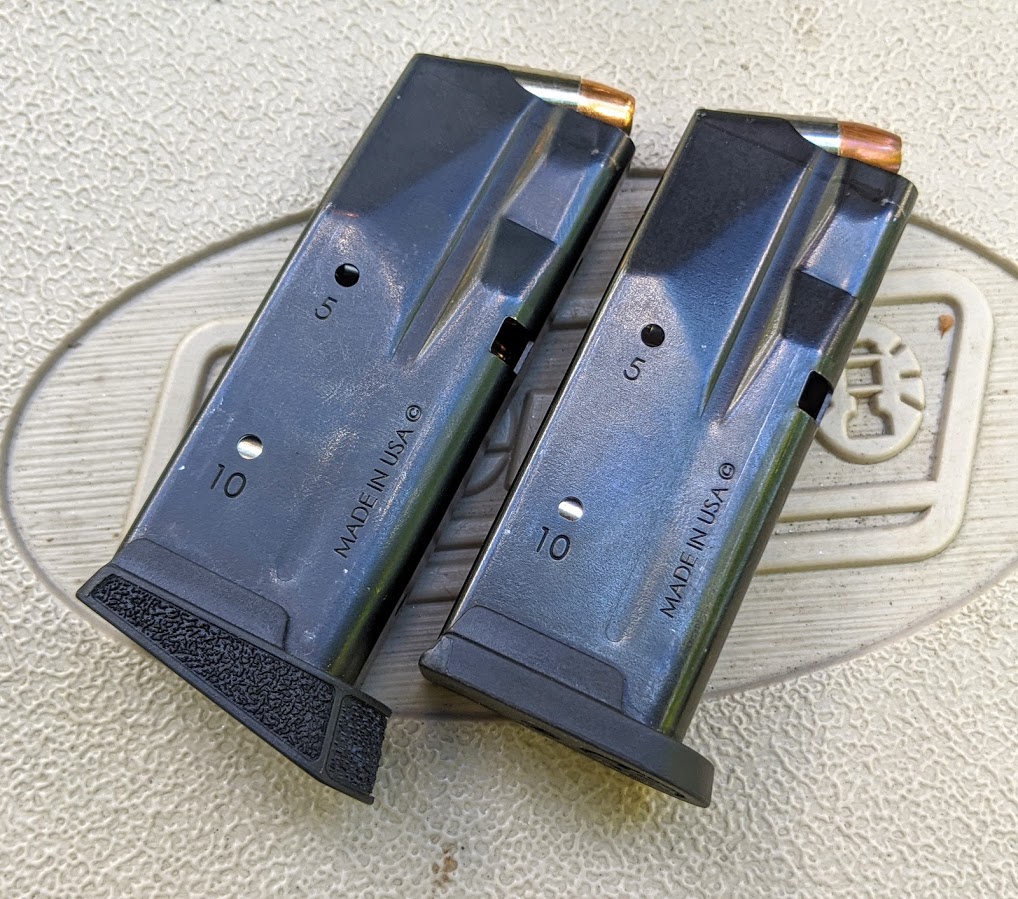
SIG Sauer and other companies do offer +2 baseplates and extended magaines to fit the P365, upping the capacity to double a Glock 43 and two more than a Glock 26! While I likely won’t carry the gun with one of these slightly longer magazines installed, they will certainly be a backup reload – and the extremely small, ingenious size of the magazines (they make a Glock 26 magazine seem positively enormous) means they are unobtrusive in pocket carry, under a Raven Concealment Pocket Shield, or in a small belt-mounted carrier. The only downside of the P365’s magazines is that they’re not compatible with any other designs, so it can’t be a backup gun to a full-sized gun and use the same mags, a la Glock 26 to the Glock 17.
WRAPPING IT UP
The SIG Sauer P365 was worthy of the proverbial mic drop – just as revolutionary as the Glock 42, Glock 43 and the S&W M&P Shield were a couple years previously. However, SIG Sauer absolutely upped the ante with the introduction of the minuscule 10+1 P365, and then called all the players with the P365 SAS. The only real competition these days comes from the Springfield Hellcat – but it ain’t a SIG – sorry XD lovers! The Hellcat also doesn’t have a slick-slide, anti-snag model like the SAS.
There are a couple detractions to this design, however, and they could be deal-breakers to some. The first is a biggie – increased difficulty with single-hand manipulations. Where the controls are all shaved flush with the gun and with a lack of protrusions to leverage as contact points for racking a slide, the SIG Sauer P365 SAS makes life quite difficult on you if you need to rack the slide one-handed for any reason. Normally, one can hook the front face of the rear sight or the edge of the ejection port on the edge of a holster, belt, or other local edge, then push the gun sharply to rack the slide and chamber a round. With no sights or even a sharp surface on the P365 SAS, this tactic is out the door. I conferred with an instructor buddy of mine, Peter Joyce from SRT Concepts, and he gave me a long list of options to try, including pinching the gun between the knees, inside an elbow or behind the knee. The only method that worked positively for me was to physically get on on the ground – on my knees or on my side. I’d pinch the slide of the gun between the heels of my feet, then push the frame of the gun forward smartly to chamber a round. I don’t like the idea of having to put myself on the ground to reload my gun, but in a life or death situation you do what you gotta do.
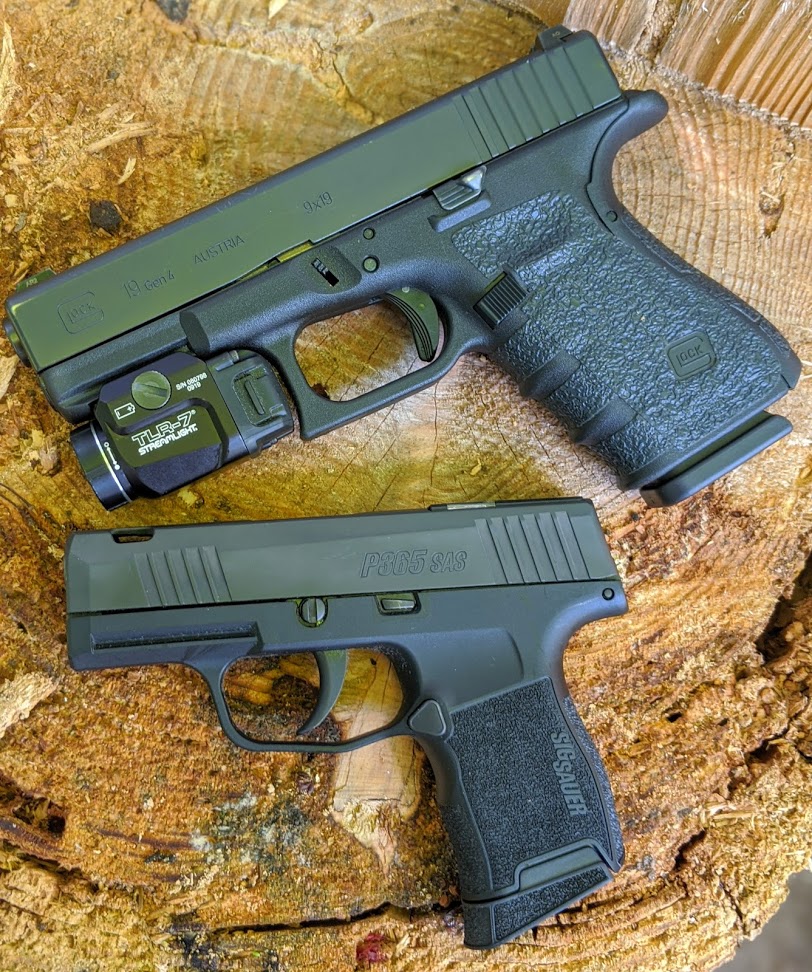
Also, I’m not wild about the porting on the pistol, and would certainly wish there was a P365 SAS model without the porting available (you CAN buy a replacement slide from SIG Sauer with the SAS sight setup but no porting to replace the slide on your standard P365 if you wish). In the various combat handgun classes I’ve taken, ported guns are a detriment when things get extremely close-in and dangerous – the very thing the P365 SAS was designed to be used for. If you shoot with the pistol right up against your body – say an assailant was close enough to stab or choke you – the porting absolutely will vent hot gasses up into your upper body, ear, eye, and head area as you fire. This effect can be combated by turning the pistol 90° away from your body, but then the pistol doesn’t point as naturally and the slide operation can impact your upper wrist. I know, this is all small peanuts in a life-or-death situation, but if you train to fight in extreme CQB circumstances, you too can be the proud recipient of some P365 SAS gas burn love. While shooting the pistol two handed with a thumbs-forward hold, I did get a slight burn on my off-hand thumb by placing it a bit too high on the slide and too close to the vent port while shooting. Yes, the P365 is that small, and it can happen.
Aside from the porting and one-hand manipulation gripes, I believe from personal experience that the SIG Sauer P365 SAS is a pistol many a concealed carrier will grow to adore. The utility and execution are flawless, and now that the design is matured and the bugs have been worked out, the reliability is flawless as well. As for the point of impact being left of center on the target, I found that this was really only an issue on paper – while shooting steel targets in a bit more of a react-draw-fire setting, hits were fast and positive. Some research on the point of impact phenomenon shows that this is not an uncommon problem for some P365 SAS owners; the sight reportedly can be very slightly adjusted, but a report from SIG Sauer states that the pistol is designed to hit an 8″ target at 20 feet – if it can do that, the sights are within spec. A very small T8 torx bit will allow you to loosen the sights and attempt to adjust, which I did and it made a slight difference – but for now I know my pistol’s defensive accuracy envelope and will work within those parameters as situations allow.

Within said envelope, the P365 SAS is a masterpiece of a carry gun, eclipsing all semi-auto micro-compact competition and pretty much relegating the small J-frame sized 5-shot revolver to the “remember when?” category. The SAS package adds about $100 to the standard P365’s $499 or so street price – but if you’re looking for the best of the carry guns available to save your life when the chips are down, the extra $100 is worth every single penny. In a year or so I’ll write a long-term review once I have a holster combination and system down – but as it sits for me, the SIG Sauer P365 SAS is absolutely as good as a pocket pistol as it gets, and worthy of your consideration as a deep concealment carry pistol or backup gun.

